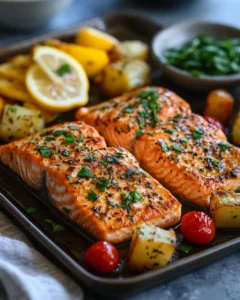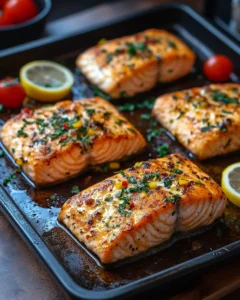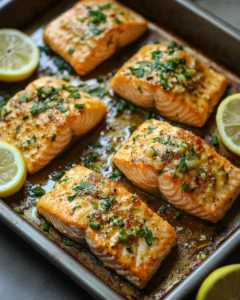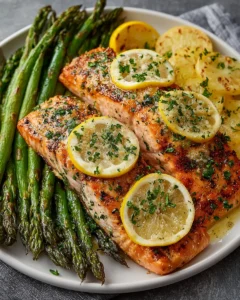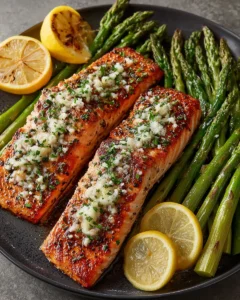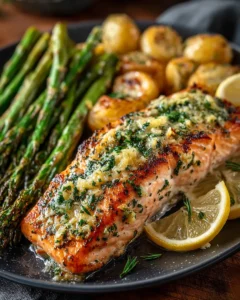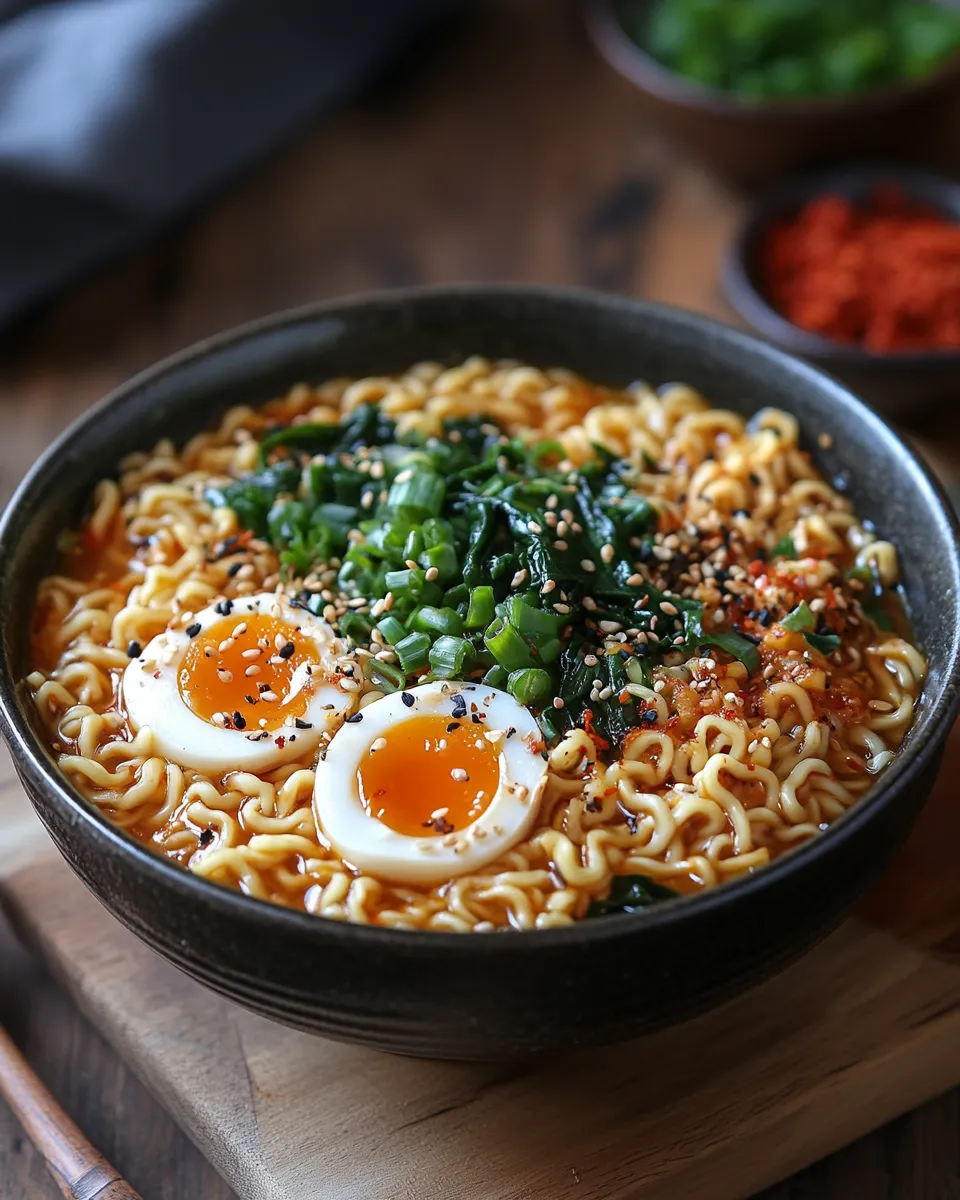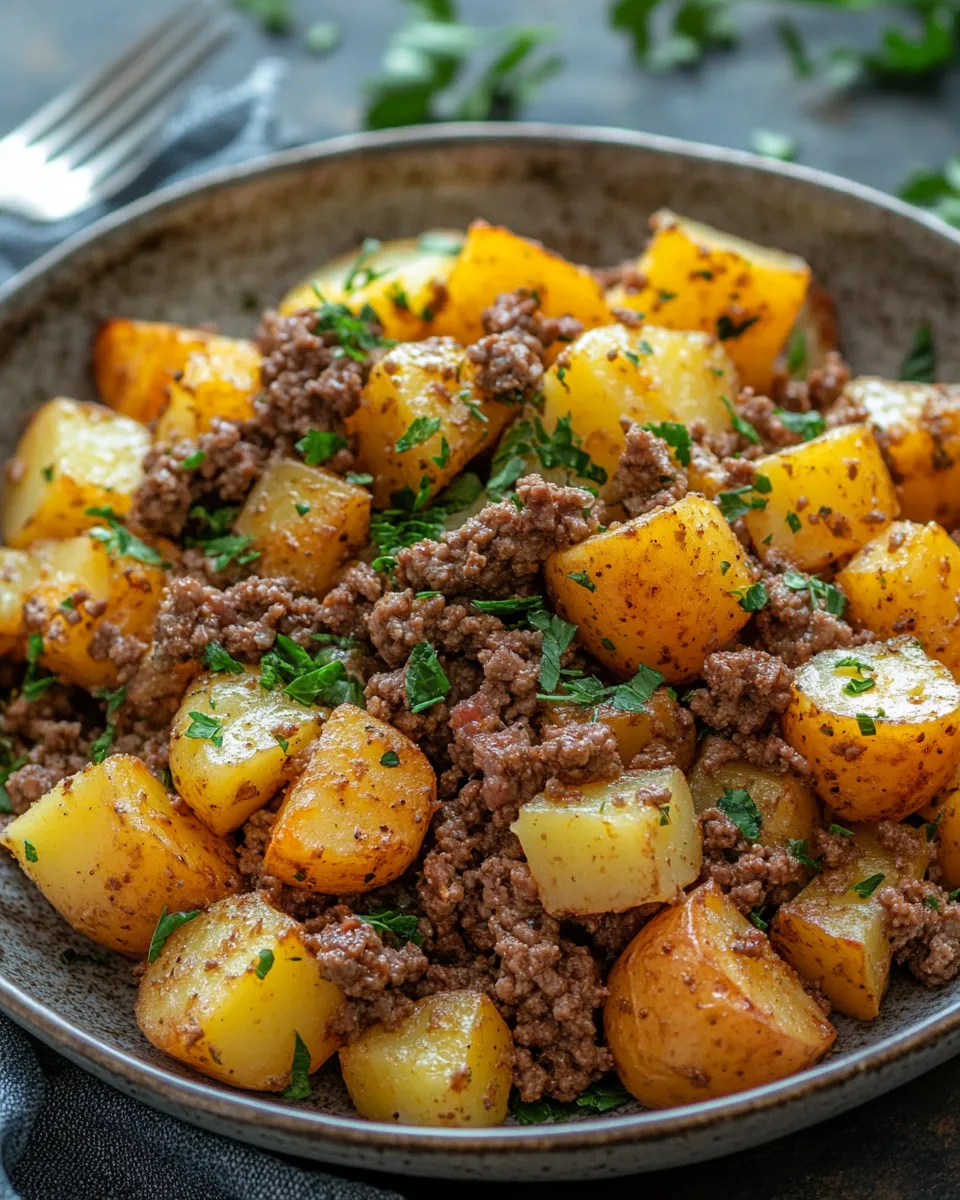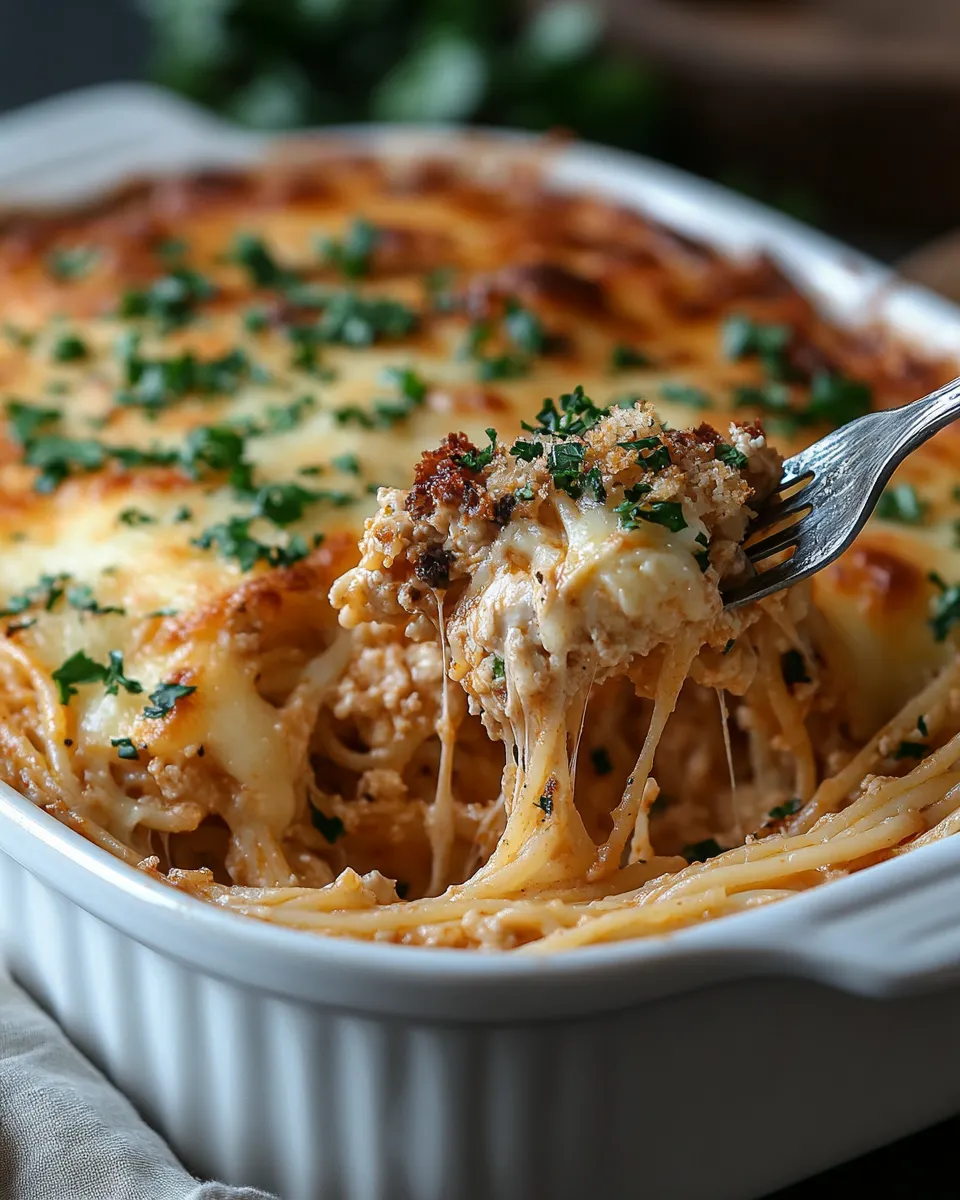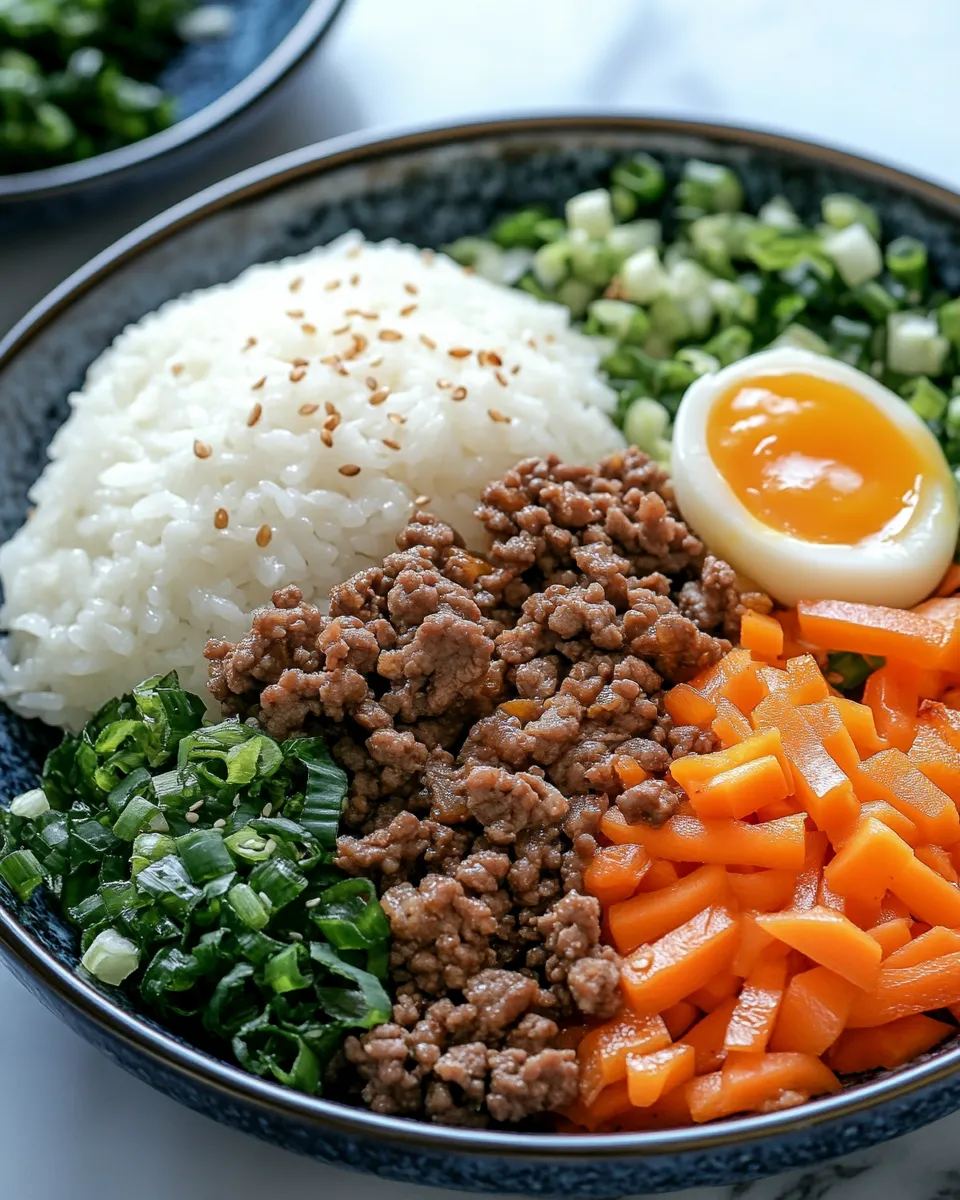A Simple, Elegant Meal for Any Occasion
There’s something incredibly comforting about a warm, home-cooked meal that fills the house with mouthwatering aromas. Sheet Pan Lemon Garlic Butter Salmon is one of those recipes that brings elegance to your table with almost no effort. Whether you’re planning a quiet weeknight dinner, a wholesome family gathering, or even a light springtime lunch, this dish always delivers.
The inspiration for this recipe came during a summer visit to the Pacific Northwest, where fresh salmon is a way of life. A local family served us salmon straight from the market, roasted with lemon, garlic, and herbs in a simple foil pack over the fire. The flavors were unforgettable — bright, buttery, and deeply satisfying. That moment inspired me to create a quick and easy version that anyone can make at home, using a single sheet pan and a few pantry staples.
Why You’ll Love This Recipe
Effortless Preparation
This recipe requires minimal prep. Everything roasts together on a single sheet pan, making cleanup a breeze. It’s the perfect solution for busy weeknights when you want something healthy but don’t want to spend hours in the kitchen.
Perfectly Balanced Flavors
The lemon brightens the richness of the salmon, while the garlic butter sauce melts into the fish and the accompanying vegetables, infusing everything with rich, savory flavor. It’s light yet filling — the kind of meal that satisfies without feeling heavy.
Healthy and Wholesome
Salmon is packed with heart-healthy omega-3 fatty acids, protein, and essential vitamins like B12 and D. Paired with fresh vegetables and a drizzle of olive oil, this dish supports a balanced diet without sacrificing flavor.
Ingredients You’ll Need
Here’s what you need to create this dish. Most ingredients are probably already in your kitchen:
For the Salmon:
-
4 salmon fillets (6 ounces each), skin on or off
-
Salt and freshly cracked black pepper, to taste
-
2 tablespoons olive oil
-
3 tablespoons unsalted butter, melted
-
3 cloves garlic, finely minced
-
Juice and zest of 1 lemon
-
1 tablespoon fresh parsley, chopped
-
1 teaspoon Dijon mustard (optional, for a flavor boost)
For the Vegetables:
-
1 pound baby potatoes, halved
-
1 red bell pepper, sliced
-
1 yellow bell pepper, sliced
-
1 small red onion, sliced
-
1 zucchini, sliced
-
Salt, pepper, and olive oil for seasoning
Step-by-Step Instructions
1. Preheat the Oven
Begin by preheating your oven to 400°F (200°C) — this is the sweet spot that allows the salmon to cook through evenly while ensuring the vegetables roast up tender with slightly crisp edges. Preheating is important because placing food into a cold oven results in uneven cooking and soggier vegetables. While the oven heats, line a large rimmed baking sheet with either parchment paper or aluminum foil. This not only prevents sticking but also makes cleanup incredibly easy — especially helpful on busy weeknights.
2. Prepare the Vegetables
Start with the baby potatoes, which require more cooking time than the other vegetables. Slice them in half and place them in a mixing bowl. Drizzle with olive oil, season generously with salt and pepper, and toss until the potatoes are well-coated. Spread them out evenly on one side of the sheet pan. Make sure they are cut-side down for a crispier, golden-brown surface. Roast these for 10 minutes to give them a head start before introducing the softer vegetables.
While the potatoes begin to roast, prep the remaining vegetables: bell peppers, zucchini, and red onion. Slice them into even, manageable pieces — not too thin, so they hold up in the oven. After the first 10 minutes, pull out the pan and add the remaining vegetables to the other side or around the potatoes. Drizzle again with olive oil, season lightly with salt and pepper, and return the pan to the oven for another 10 minutes. This layered roasting technique ensures all the vegetables finish cooking at the same time without overcooking the softer ones.
3. Make the Lemon Garlic Butter Sauce
While the vegetables are roasting, it’s the perfect time to prepare the star of the show — the lemon garlic butter sauce. In a small bowl, melt unsalted butter (about 3 tablespoons). Once melted, stir in finely minced garlic, fresh lemon juice, and lemon zest for brightness and depth. Add chopped parsley for a burst of freshness, and include a touch of Dijon mustard if desired — it adds a subtle tang and complexity without overpowering the other flavors. This sauce brings everything together, coating the salmon and vegetables in a luxurious, aromatic glaze.
4. Prepare the Salmon
Once the vegetables have had their time to roast, remove the sheet pan from the oven. Gently push the vegetables toward the edges to make room in the center or one side for the salmon fillets. Place each fillet skin-side down if the skin is still on. Brush the tops generously with the prepared lemon garlic butter sauce, allowing the excess to run down the sides and onto the vegetables — this helps marry all the flavors on the pan.
5. Roast Everything Together
Place the sheet pan back into the oven and roast for 12 to 15 minutes, depending on the thickness of your salmon. The fish should look opaque and flake easily with a fork when done. You can also check for doneness using a meat thermometer — the salmon is ready when it reaches an internal temperature of 145°F (63°C). During this time, the butter sauce will soak into the salmon and veggies, creating a rich, savory flavor profile with hints of citrus and garlic.
6. Optional: Broil for Extra Color
If you want an extra touch of color and caramelization, turn your oven to broil and cook the sheet pan for an additional 2 to 3 minutes at the end. Keep a very close eye during broiling — it only takes seconds for food to go from golden to burnt. This quick step enhances both flavor and presentation, giving your salmon a slightly crispy top and beautifully browned edges on the vegetables.
Tips for Perfect Salmon Every Time
Use Fresh Salmon
If you can, choose fresh, wild-caught salmon. It has better flavor and texture than farmed. If using frozen, be sure to thaw completely and pat dry before roasting.
Don’t Overcook
Salmon continues to cook after it’s removed from the oven. Pull it out once the center is just opaque and flakes with a fork. Overcooked salmon becomes dry and loses its buttery texture.
Customize Your Vegetables
Feel free to mix it up with other veggies like asparagus, cherry tomatoes, green beans, or even thinly sliced carrots. Just be mindful of their roasting times.
Keep It Low Carb
For a low-carb option, replace potatoes with cauliflower florets or omit them entirely. The salmon and veggies are flavorful enough to stand on their own.
What to Serve with Lemon Garlic Butter Salmon
This sheet pan salmon is a complete meal on its own, but here are a few serving ideas to round it out:
-
Steamed rice or quinoa: To soak up that delicious lemon garlic butter
-
Crusty bread: Perfect for mopping up the juices
-
Simple green salad: Dressed with olive oil and vinegar
-
Tzatziki or Greek yogurt dip: Adds a cooling contrast
Make-Ahead and Storage Tips
Can I make it ahead?
While best served fresh, you can prep everything in advance:
-
Mix the butter sauce and store in the fridge for up to 3 days.
-
Chop the vegetables and store them in containers.
-
Pat salmon dry and keep it in the fridge until ready to roast.
When you’re ready, just assemble and bake.
How to store leftovers
-
Refrigerate: Store leftover salmon and vegetables in an airtight container for up to 3 days.
-
Reheat: Warm gently in a 300°F oven or microwave until heated through. Be careful not to overcook.
-
Freeze: You can freeze cooked salmon for up to 2 months. Reheat from frozen or let it thaw overnight in the fridge.
Variations to Try
Mediterranean Style
Add kalamata olives, cherry tomatoes, and red onion slices to the pan. Swap parsley for fresh oregano or basil.
Asian-Inspired
Use sesame oil instead of butter and add a splash of soy sauce, grated ginger, and green onions. Serve with jasmine rice or soba noodles.
Cajun Kick
Mix Cajun seasoning into the butter sauce for a spicy, smoky twist. Pair with roasted corn and sweet potatoes.
Pesto Drizzle
After baking, spoon basil pesto over the salmon and serve with roasted asparagus and parmesan potatoes.
Frequently Asked Questions
Can I use frozen salmon for this recipe?
Yes, you can absolutely use frozen salmon if fresh isn’t available. However, it’s important to thaw the salmon completely before cooking to ensure it roasts properly. Place the frozen fillets in the refrigerator overnight, or use the quick-thaw method by sealing them in a zip-top bag and placing them in cold water for about 30 minutes. Once thawed, pat the salmon dry with paper towels to remove any excess moisture. This step is essential — too much moisture on the surface will prevent browning and can lead to a mushy or steamed texture rather than a crisp, roasted finish.
What kind of salmon is best for sheet pan roasting?
While you can use any variety of salmon, some types work better than others depending on your flavor preferences. Wild-caught salmon such as sockeye, coho, or king (chinook) offer a richer, deeper flavor and firmer texture. These varieties are excellent for roasting because they hold their shape and take on seasoning well. If you prefer a milder and more buttery flavor, Atlantic salmon is a good option. It’s typically farm-raised and has a higher fat content, which makes it more forgiving if slightly overcooked. Either type works — just aim for fillets of similar size for even cooking.
Can I cook the salmon without any vegetables?
Definitely. If you’re planning to serve the salmon with another side dish like rice, quinoa, pasta, or even mashed potatoes, you can roast the salmon fillets on their own. To do this, line a sheet pan as usual and simply place the fillets in the center. Reduce the cooking time by about 2 to 3 minutes, especially if the oven isn’t crowded with veggies, as salmon alone will roast more quickly.
How do I know when the salmon is done?
Properly cooked salmon should be opaque in the center and flake easily with a fork. For the most accurate results, use a meat thermometer inserted into the thickest part of the fillet — it should read 145°F (63°C). Be careful not to overcook, as salmon continues to cook slightly after being removed from the oven.

